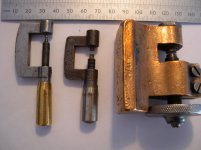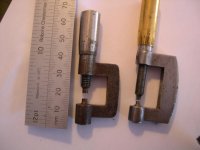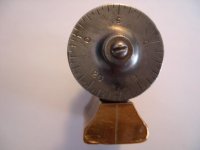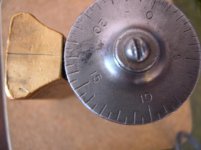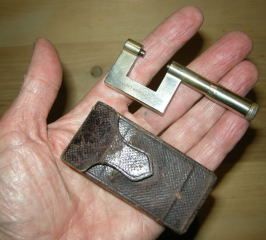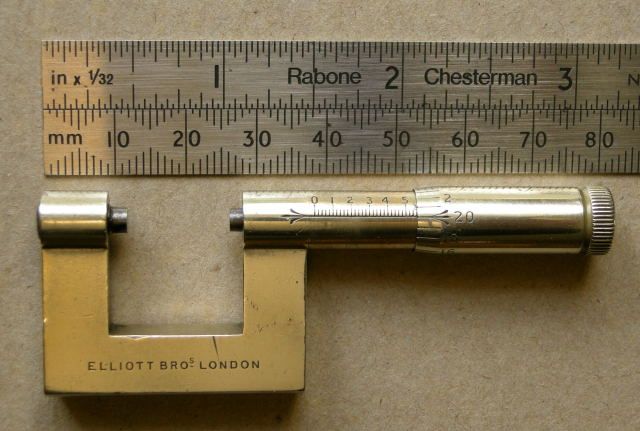rivett608
Diamond
- Joined
- Oct 25, 2002
- Location
- Kansas City, Mo.
While meaning no disrespect to our friends across the pond it seems as if the US lead the way in the development of machinists measuring tools, the big firms of Brown & Sharpe and Starrett pre date Shadrow and Moore & Wright. But here is something a little interesting..... a English micrometer that pre dates most of the American ones..... this is by the instrument firm of Elliott in London which had been around for quite some time making all sorts of scientific instruments. The first reference I have seen is in a book "Workshop Appliances" by C. P. B. Shelley, 1873 (reprinted by Lindsay).......... now this fit in between the first two Brown & Sharpe mics, the 1868 pocket sheet metal gauge (that is the little 3/8" mic) and the 1877 1" mic with small rectangular frame with rounded corners.... the 1" curved frame like we know didn't come out till 1878........ so here we have a earlier and more advanced or useful mic...... the question is how popular these were with UK craftsman and why didn't any more advances in micrometer development stem from this in the 1880s?
A few details to note.... this 1/2" mic is solid nickel silver, it also has a 50 pitch thread at 55º.... both detail like the Church micrometer......
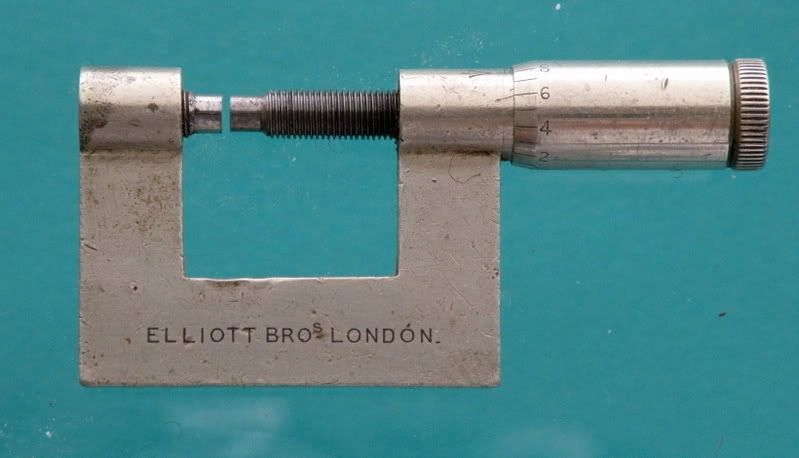
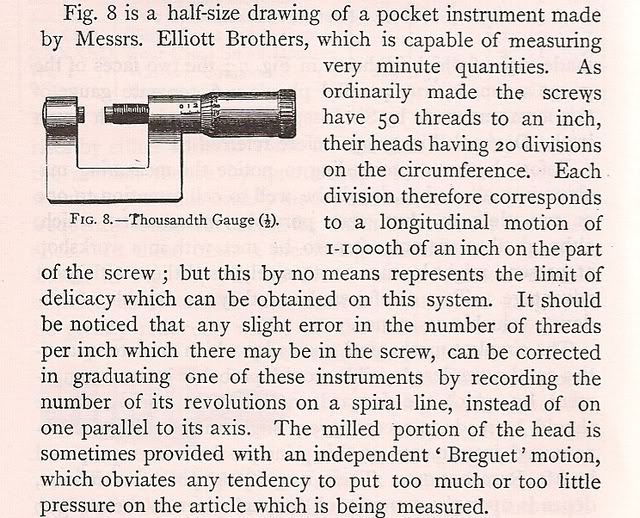
A few details to note.... this 1/2" mic is solid nickel silver, it also has a 50 pitch thread at 55º.... both detail like the Church micrometer......





